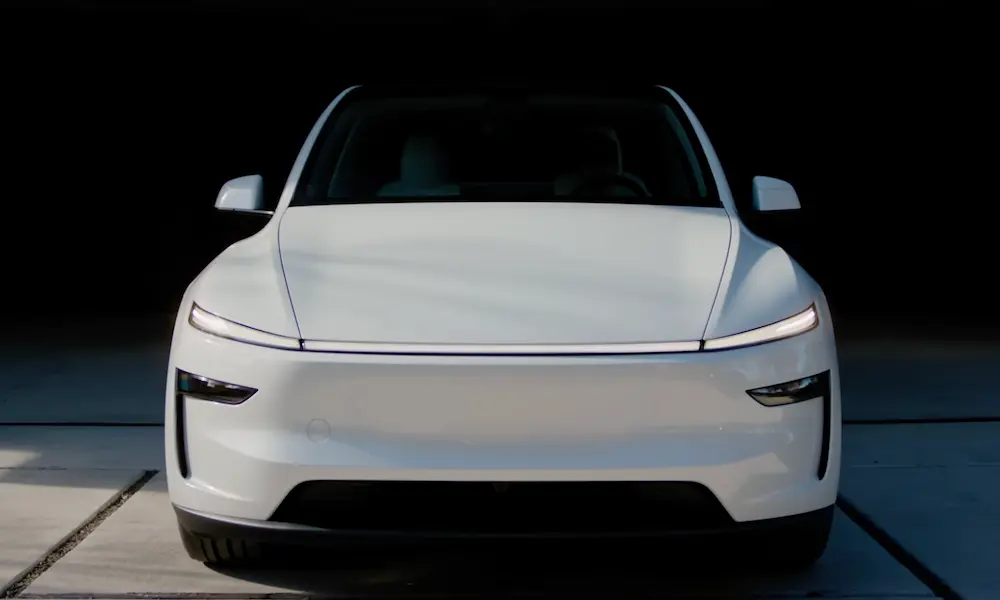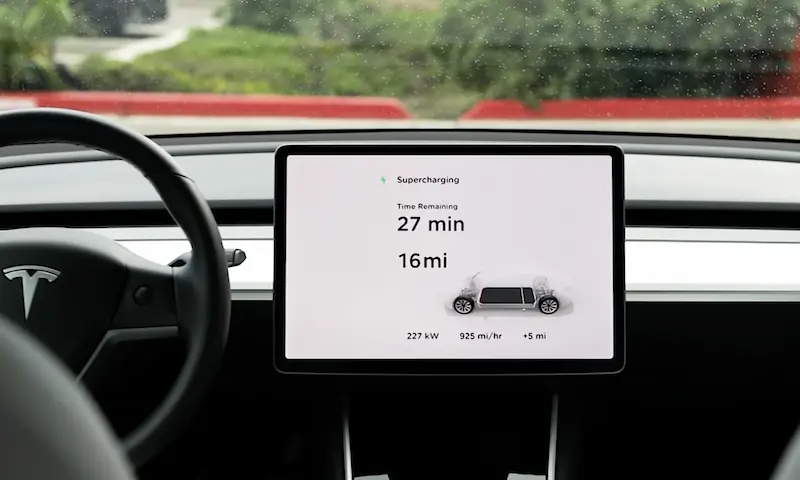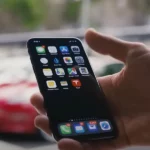Having trouble with your Tesla charger? You’re about to discover why your Tesla might not be charging and how to fix it. From wall connectors giving error codes to superchargers that won’t connect, we’ll walk through the most common charging issues and their solutions.
Why Your Tesla Charger Might Stop Working
Tesla’s charging system is typically reliable, but several issues can interrupt your charging session. Before calling for help, try these troubleshooting steps based on your specific charger type.
Wall Connector Problems
Wall Connectors can experience several issues that prevent proper charging:
Ground Fault Errors
If you’re seeing a CC_a005 error, your Wall Connector has detected a ground fault. This happens when the charger detects current leakage of 6mA or more, which is a safety feature to prevent electric shock.
Quick fixes:
- Check for moisture in your garage or charging area
- Inspect for damaged insulation in your electrical system
- Verify proper grounding with a multimeter
According to Tesla’s troubleshooting guide, most ground faults resolve by simply resetting the circuit breaker. Turn it off for 10 seconds, then back on to reset the internal relays.
Voltage Issues
A CC_a007 error indicates voltage problems. Your Tesla Wall Connector needs stable voltage between 200-250VAC.
Solutions:
- During power outages or brownouts, wait for stable power to return
- Have an electrician check your home’s voltage stability
- Consider a voltage stabilizer if you live in an area with frequent fluctuations
Firmware Synchronization Problems
Older Wall Connector firmware can cause compatibility issues with newer Tesla vehicles. The Wall Connector needs regular updates to maintain compatibility.
How to fix:
- Ensure your Wall Connector is connected to Wi-Fi
- Force an update by disconnecting and reconnecting to your network
- Position your router closer to improve signal strength (aim for -67dBm or better)
Mobile Connector Issues
The portable charging option that comes with your Tesla can also experience problems:
Adapter Connection Problems
The NEMA adapters used with Mobile Connectors can develop issues after repeated use:
Troubleshooting steps:
- Look for visible damage to the adapter contacts
- Clean the adapter pins with electronic contact cleaner
- Try a different outlet if available
- Check for CC_a011-013 error codes that indicate overheating
A study of Tesla’s charging equipment shows that connectors can develop hotspots exceeding 90°C at compromised terminals, which triggers safety cutoffs.
Circuit Overload
If you’re using a standard household outlet (NEMA 5-15), it may not handle extended charging sessions.
Solutions:
- Reduce the charging amperage in your Tesla’s settings
- Allow the circuit to cool down before attempting to charge again
- Consider upgrading to a dedicated 240V circuit
Supercharger Connection Failures
When your Tesla won’t charge at a Supercharger, try these troubleshooting steps:
Communication Errors
Tesla Superchargers use specialized communication protocols to talk to your car. Errors like CP_a140 indicate a communication breakdown.
Quick fixes:
- Disconnect and reconnect the charging cable firmly
- Check for debris in your charge port
- Try a different stall at the same Supercharger location
- Restart your Tesla’s touchscreen
Charge Port Latch Issues
The CP_a054 error means your charge port latch isn’t engaging properly with the Supercharger connector.
Solutions:
- Manually release the charge port using the emergency release cable in your trunk
- Clean the charge port area
- In cold weather, precondition your battery before arriving at the Supercharger
According to Tesla owners forums, the charge port latch can freeze in cold weather, preventing proper connection.
Environmental Factors Affecting Tesla Charging
Your environment plays a significant role in charging performance:
Cold Weather Charging Problems
Tesla batteries and charging systems don’t perform optimally in cold temperatures.
| Temperature | Charging Speed Reduction | Recommended Solutions |
|---|---|---|
| 32°F (0°C) | Minimal impact | Precondition battery |
| 14°F (-10°C) | Up to 40% slower | Use garage/shelter |
| -4°F (-20°C) | Up to A80% slower | Warm car before charging |
Cold weather solutions:
- Precondition your battery before charging (set departure time in the app)
- Park in a garage when possible
- Apply dielectric grease to charge port connections in extremely cold areas
- Schedule charging during warmer parts of the day
Heat-Related Charging Issues
High temperatures can also affect charging performance:
Solutions for hot weather charging:
- Avoid charging during the hottest part of the day
- Park in shade when charging if possible
- Allow the battery cooling system to work by not immediately charging after driving in hot conditions
Electrical Installation Issues
Problems with your home’s electrical system can prevent proper Tesla charging:
Circuit Breaker Trips
If your circuit breaker trips when charging, there might be several causes:
Troubleshooting steps:
- Check if other high-draw appliances are sharing the circuit
- Verify your circuit can handle the charging amperage (typically needs 40-60 amp dedicated circuit)
- Inspect for damaged wiring or water exposure
- Look for loose connections at the breaker panel
Arc Fault Protection
Modern electrical codes require AFCI (Arc Fault Circuit Interrupter) protection, which can sometimes conflict with EV charging.
Solutions:
- Use Tesla-recommended circuit breakers that are compatible with EV charging
- Have an electrician verify your AFCI breaker is compatible with Tesla charging equipment
- Install a dedicated circuit specifically designed for EV charging
The 2024 National Electrical Code revisions mandate AFCI protection for all EV charging circuits, which has reduced thermal events by 62%.
Software and Vehicle-Related Charging Problems
Sometimes the issue isn’t with the charger but with your Tesla:
Software Bugs
Tesla frequently updates vehicle software, which can occasionally introduce charging bugs.
Solutions:
- Check if your Tesla has the latest software version
- Perform a soft restart (hold both scroll wheels until the screen restarts)
- Schedule a software update if one is available
- Contact Tesla support if the issue persists after updating
Battery Management System Issues
Your Tesla’s Battery Management System (BMS) might need to recalibrate:
Steps to resolve:
- Fully charge your battery to 100% (do this occasionally even if you normally charge to 80-90%)
- Let the battery drain to under 20% before recharging
- Allow several complete charge cycles to help the BMS recalibrate
Diagnostic Steps for Any Tesla Charging Problem
Follow this step-by-step process to diagnose any charging issue:
1. Check for Error Codes
Tesla provides specific error codes to help diagnose charging problems:
- CC_a### codes relate to the charging equipment
- CP_a### codes indicate charge port issues
- Look up the specific error in your Tesla owner’s manual
2. Verify Charging Equipment
For Wall Connectors:
- Check the LED light pattern (green streaming means normal operation)
- Ensure proper installation according to Tesla guidelines
- Verify Wi-Fi connectivity for firmware updates
For Mobile Connectors:
- Inspect for physical damage to adapters and cables
- Test with multiple outlets if possible
- Verify the outlet has power using another device
For Superchargers:
- Try multiple stalls at the same location
- Check the Tesla app for station-specific alerts
- Look for physical damage to the connector
3. Vehicle Troubleshooting
If the charging equipment seems fine, check the vehicle:
Simple fixes:
- Close all doors and windows during charging
- Ensure the vehicle is in Park
- Try locking and unlocking the vehicle
- Toggle Sentry Mode off
- Restart the touchscreen
4. Advanced Diagnostics
If basic troubleshooting doesn’t work:
Use the Tesla app:
- Monitor real-time voltage and current data
- Check for charging speed limitations
- View any active alerts
Check physical connections:
- Inspect the charge port for debris or damage
- Look for bent pins in connectors
- Verify cable integrity
Preventive Maintenance Tips
Prevent future charging issues with these maintenance tips:
Keep Connections Clean
Regularly inspect and clean your charging equipment:
- Wipe charging port and connectors with a dry cloth
- Remove any debris from the charge port
- Apply dielectric grease to connections if you live in a humid area
Protect from the Elements
Environmental protection extends charger life:
- Install Wall Connectors under cover when possible
- Use the included cap to protect your car’s charge port
- Keep Mobile Connector adapters in the provided bag when not in use
Regular Software Updates
Stay current with updates:
- Enable automatic updates for your Tesla
- Connect your Wall Connector to Wi-Fi for firmware updates
- Check for connector firmware updates in the Tesla app
When Charging Issues Persist
If you’ve tried everything and still have problems:
Contact Tesla Support
Tesla offers several support options:
- Schedule service through the Tesla app
- Call Tesla roadside assistance for immediate help
- Visit a Tesla Service Center for hands-on diagnostics
Document the Problem
When contacting Tesla, have this information ready:
- Specific error codes displayed
- When the problem started occurring
- What troubleshooting steps you’ve already taken
- Photos or videos of any error messages or unusual behavior
The Future of Tesla Charging Reliability
Tesla continues to improve their charging technology:
- Newer Wall Connectors include enhanced diagnostic capabilities
- Software updates regularly improve charging efficiency and reliability
- The Supercharger network is continuously expanding and upgrading
Despite occasional issues, Tesla’s charging infrastructure remains one of the most reliable electric vehicle charging networks available today.












